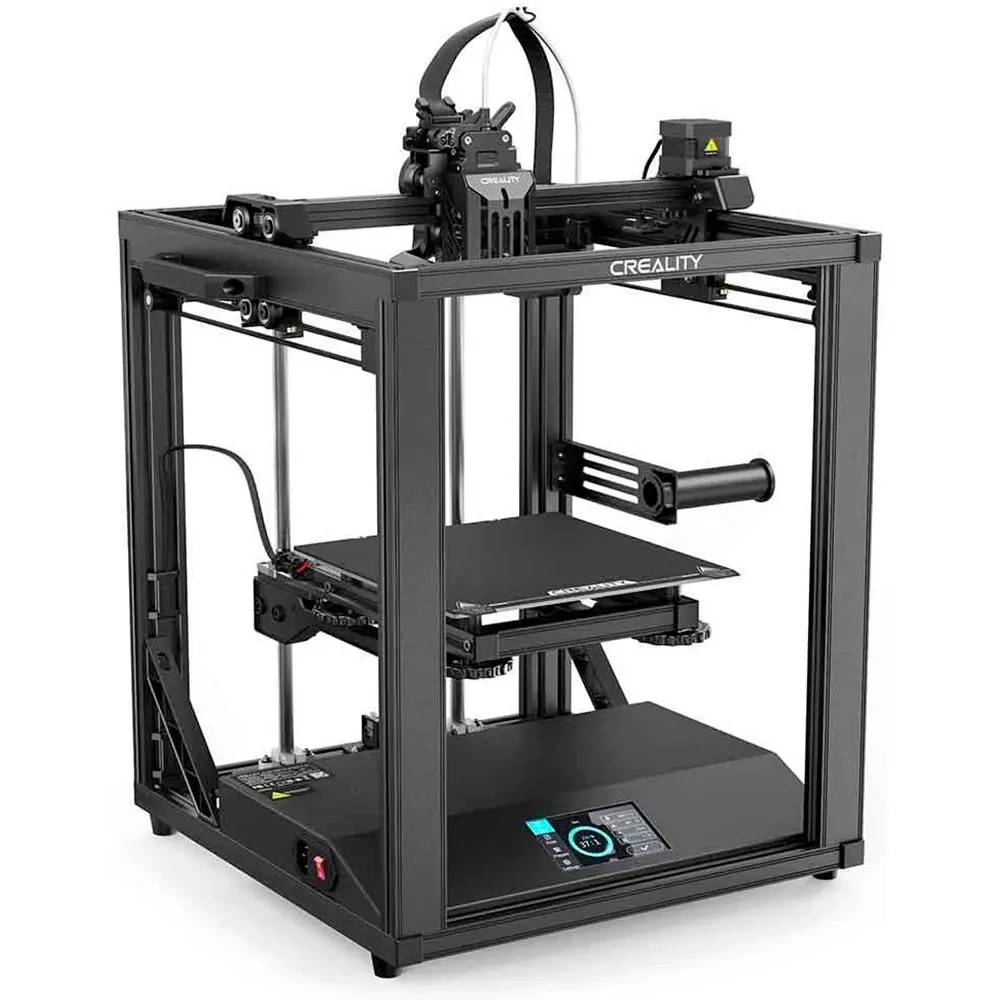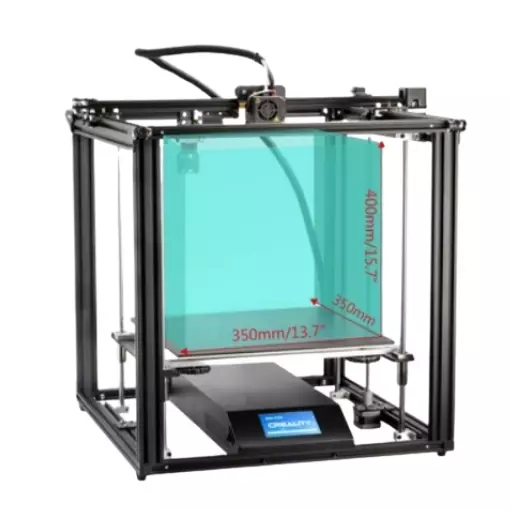Compare Ender 5 S1 vs Ender 5 Plus
Comparison between the best 3D printers
Choose the best 3D printer at the best price. The cheapest 3D printers are here.
Buy a 3D printer here with 3D Fila.
 |
 |
|
| Model | Ender 5 S1 |
Ender 5 Plus[BUY Ender 5 Plus] |
| Printing Material | Filament | Filament |
| Buy Filament for Creality 3D Ender 5 S1 | Buy Filament forCreality 3D Ender 5 Plus | |
| Estimated price | $467,00 | $599,00 |
| Manufacturer | Creality 3D | Creality 3D |
| Release Year | 2022 | 2019 |
| Print Volume [mm] | 220x220x280 | 350x350x400 |
| Printer Size [mm] | 425x460x570 | 632x619x666 |
| Weight [kg] | 12,1 | 18,2 |
| Power Loss Recovery | YES | YES |
| Enclosed printer | NO | NO |
| Bed Leveling | Automatic | Automatic |
| Filament End Sensor | YES | YES |
| Bed type | Heated | Heated |
| Power supply system | Direct Drive | Bowden |
| Standard nozzle | 0,4 | 0,4 |
| Maximum Nozzle Temperature [°C] | 300 | 260 |
| Maximum Bed Temperature [°C] | 110 | 100 |
| Maximum printing speed [mm/s] | 250 | 180 |
| Filament holder | YES | YES |
| Camera for supervision | NO | NO |
| Recommended filaments | PLA, ABS, PETG, TPU, PC, ASA, HIPS | PLA, TPU, ABS, PETG |
| Recommended slicers | Cura, Simplify, Slic3r, IdeaMaker | Cura, Simplify, Slic3r |
| Maximum Resolution [mm] | 0,05 | 0,1 |
| Processor | 32 Bits | 32 bits |
| Display | Display touchscreen 4,3 '' | Touchscreen TFT 4,3'' |
| Power Supply | 350 W | 24V / 504W |
| Connectivity | SD / USB / Wi-Fi | SD / USB |
| Operating systems | Windows, Mac, Linux | Windows, Mac, Linux |
| Date of registration in the system | 2023-10-04 | 2021-04-14 |
| Release date | 2022 | 2019 |
| Extra features | A steel drive shaft synchronizes the two Y-axis belts. High-torque 42-48 Y-axis motor for responsive and precise movement. Cartesian structure. Enhanced stability by thick linear shafts, extra stiffeners, two cantilevers, and silicone bumpers. Double Die Spring profile reinforcement. Silicone bed support. All-metal Sprite direct extruder. Best for printing with flexible filaments like TPU. Auto-calibration with 16-point CR Touch. Compatible with Sonic Pad, Wifi Box, and Camera kit. | The Ender 5 Plus offers a large print volume (350x350x400 mm) and fast assembly. It includes a BLTouch sensor, but with range limitations. It stands out for its dimensional accuracy, although it requires adjustments to the slicer settings. Despite the noise, its integrated design saves space, and includes features such as a filament sensor and power resumption. Ideal for large projects, it requires refinement in the settings for high-quality prints. |
| Support for multiple colors and materials (AMS and CFS) | NO | NO |
Notes * |
||
| Cost-benefit | 7 / 10 | 6 / 10 |
| Hardware | 2.4 / 10 | 2 / 10 |
| Tela | . | . |
| Print volume | 3 / 10 | 4 / 10 |
| Performance | 2 / 10 | 1 / 10 |
| [BUY Ender 5 Plus] |
Conclusion |
| In comparing the Ender 5 S1 and Ender 5 Plus 3D printers, several factors must be considered to determine which model offers the best value for potential users. The Ender 5 S1, released in 2022, stands out for its superior printing speed and resolution, coupled with a compact and lighter design. It boasts an impressive maximum printing speed of 250 mm/s and a minimal resolution of 0.05 mm. These features make it better suited for users looking for quick and high-quality prints, particularly with flexible materials, thanks to its direct drive system. Additionally, its lower price point enhances its cost-effectiveness, making it an appealing option for both beginners and experienced users who prioritize a fast and precise printing experience. On the other hand, the Ender 5 Plus, despite being older (released in 2019), offers a significantly larger print volume, which is a crucial factor for users who frequently work with larger projects. It features a more extensive build area of 350x350x400 mm, allowing for the printing of bigger models without the need for assembly. While it includes automated bed leveling and other useful features, potential users may need to invest more time in calibrating settings for optimal performance, which can pose a challenge for less experienced individuals. Ultimately, the choice between the two models depends on the user’s specific needs. The Ender 5 S1 is likely the better fit for those needing high speed and resolution in smaller-scale prints, while the Ender 5 Plus caters to those focused on larger projects and who are comfortable fine-tuning their settings. In terms of cost-benefit, the Ender 5 S1 emerges as the more favorable option, while the Ender 5 Plus may justify its higher price for users who prioritize print volume and dimensional accuracy. Thus, for users seeking the best overall value, the Ender 5 S1 makes a compelling case. |

